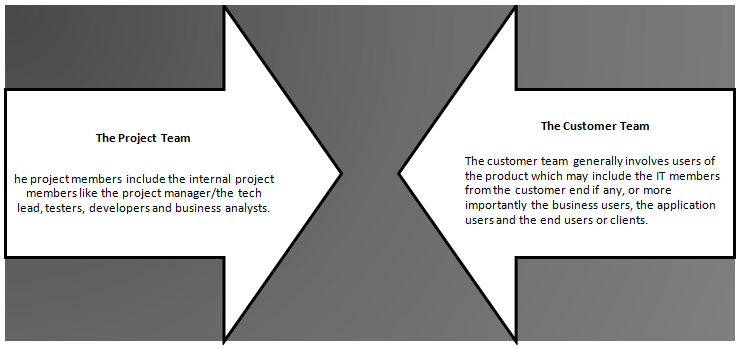User experiences, that became a cult for mobile apps now also weigh heavy on the minds of the designers of modern-day software and solutions. Evaluating then, how the system meets the expectations of the users is of the utmost importance and a very critical checkpoint for all systems scrutinized by third-party software testing companies. User acceptance testing or the verification of the systems by the users makes sure that the system complies with the requirements, handling the real-world scenarios guaranteeing user satisfaction.
UAT in the Millennial World Day
User Acceptance Testing or UAT is the very last, yet very critical stage of the quality assurance cycle. It is only after the system is accepted upon completion of UAT that the software is deemed fit to be released and is a confirmation in itself that the software is suitable to go live.
The disruptive millennial age user puts on a thinking cap to comprehend if the software presented fits the requirements put in by them or not. The UAT is typically a black box testing where the users are not aware of the structure of the underlying code but know how the system should respond to a given action or input.
Prerequisites of User acceptance testing
A fruitful UAT is the result of proper planning and meticulous execution of the software development cycles.
- The complete business requirements based on which the UAT test cases are created must be made available.
- The coding phase should be completed with thorough testing involving unit testing, integration testing, and system testing.
- All the high priority and high severity defects should be fixed and should be void of any other bugs.
- With the exception of cosmetic preferences, all other defects reported during the testing phase should be fixed and tested before UAT.
- The traceability matrix which gives a complete view of the execution status of the project should be updated thoroughly.
- The UAT plan rolled out by the third party software testing companies should be published so that the arrangements can be made for the required resources.
- The environment for UAT which is sometimes a replica of the production or sometimes the production environment itself should be made ready.
- Sign-off from the system testing team should be communicated which implies that the system is ready for UAT.
Executing the UAT
The UAT progresses step by step to culminate into a comprehensive user acceptance test cycle.
Alpha testing
This takes place in the development or controlled environment before the system is released to the external testers. It is generally performed by the internal staff though a potential user group may also be involved. The feedback collected from these testers are used to improve the product.
Beta testing
Beta testing happens in the production environment by the end-users or customers. As it is performed in an uncontrolled environment it exposes the product through several complexities and the feedback obtained from the users then can be used to improve the product quality.
Contract Acceptance testing
This testing makes sure that the system is developed against the specifications that were predefined when the contract was agreed upon.
Regulation Acceptance testing
This testing makes sure that the product complies against various regulations including government and legal regulations.
Operational Acceptance testing
In this testing, the production environment is simulated to ensure defects are detected and the system can be improvised. It mainly concentrates on the non-functional aspects of the software to ensure the operational capabilities of the software run smoothly.
Important aspects are tested during the operational acceptance testing including analyzing the challenges for performance testing.
–> Memory usage
–> Performance issues
–> Maintainability
–> Security
–> Recoverability
Driving the UAT testing
The participants for UAT vary depending on the projects, clients, and organizational practices. UAT team generally consists of project or technical team and customer teams. Independent software testing & QA services companies drive the exercise meticulously.
The Teams Behind UAT
The project members are responsible for the planning and coordination of the UAT activities including scheduling UAT meetings, communicating with the members involved in the UAT, preparing the test cases, and fixing the defects identified. In some cases, the end-user teams would also be responsible for the creation of the test cases as they are well acquainted with the real-world scenarios the software might face.
In a Nutshell – Adding the User Perspective into the software
Inspite of the myths & facts surrounding the various aspects of testing, all the steps in a QA cycle bear critical importance. UAT enables to confirm the view of the systems from the end user’s perspective and validates whether the business needs are met or not.
When new features are added or modified or an existing system is replaced, may cause anxiety among the end-users regarding the impact of the changes. But since the UAT is performed by the business users in environments suited to them, UAT in the development cycle eases out that stress and increases the confidence level of the users about the software before it is brought to them for usage.
Independent software testing & QA services companies appreciate the fact that the information, knowledge, and feedback provided by the end-users is immensely valuable for the development teams to determine if the software satisfies the user requirements indicating the success of the software itself understanding the importance of UAT.







